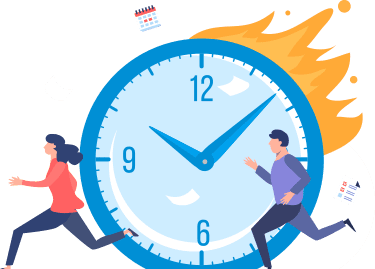Teachers Best Lesson Plan for Dyslexia Students
Introduction
Dyslexia or a reading disorder is described as a difficulty in reading. This disability affects different individuals with varying degrees of difficulties that may include problems in reading quickly, spelling words, “sounding out” words in the head, writing phrases or enunciating them while reading loudly, and comprehending what someone reads. Normally, the issues are detected at school for the first time. They are instinctive, and people with dyslexia have an unaffected wish to learn. The origin of dyslexia is alleged to involve hereditary and prone to environmental influences. The condition may arise in old age due to a brain damage, dementia, or a stroke. The current paper analyzes the evidence of the existence of dyslexia as presented by various research results and explores the strategies that can be adopted to support dyslexic individuals.
Evidence of Existence of the Problem
According to Gersten, Fuchs, Williams and Baker (2001), a student with dyslexia shows limited familiarity with the difference between story text and expository construction. Students with learning incapacities normally develop story grammar knowledge, story text arrangement at a considerably slower pace than their peers without dyslexia. The study evidently indicates that students with dyslexia are less aware of story or expository text constructions and, therefore, face problems using them as tools to understand text. Additionally, students with dyslexia have trouble with most of the terminology used to deliver academic ideas (Gersten, Fuchs, Williams & Baker, 2001). Correspondingly, dyslexia students face bigger trouble in recognizing the key information in their discussion and summarization of the narration than non-dyslexia students linking this kind of a hardship to inferior theme identification.
Place New Order
Generally, as stated by Gersten, Fuchs, Williams and Baker (2001), there exists a strong connection between reading fluency and understanding. The study reveals that interferences that upsurge reading fluency improve learners’ comprehension capacities as well. After comparing dyslexia students to non-dyslexia ones, the paper shows that dyslexia students have incomplete background awareness for reading several texts. Moreover, reading is a multifaceted activity requiring the effective choice, implementation, and controlling of various strategies. However, dyslexia peers face great challenges acting on these necessities (Gersten, Fuchs, Williams & Baker, 2001).
Mcnulty (2003) conducted in-depth interviews with 12 participants seeking to investigate the presence of dyslexic tendencies in their life courses. According to Mcnulty (2003), dyslexia seems to negatively affect self-esteem and confidence while dyslexia students are more reliant on character features than their peers and have a higher likelihood of exhibiting symptoms of nervousness and depression along with a negative self-image and low self-esteem. As a result of the strong feelings of embarrassment, people with dyslexia have a likelihood of denying or even disowning their learning incapacities to defend their sense of character and self-confidence.
Mortimore & Crozier (2006) studied a questionnaire review of 136 male learners from 17 higher education institutions in Britain with 74 of them without dyslexia and 62 having the disability. The results indicated that, even though, the dyslexia students who participated in the investigation were adequately well competent to get admission to higher education, they experienced significantly more problems with a variety of learning and reading abilities than the sample of their non-dyslexia peers (Mortimore & Crozier, 2006). The purpose of the study was to survey the alleged issues and support requirements of the sample of learners diagnosed with dyslexia. In brief, the feedbacks from the assessment group indicate that the majority of the group state problems with arrangement, time keeping, and attention. Furthermore, the study reported that dyslexia students were neither able to take notes when listening and watching nor comprehend the information at the same time (Mortimore & Crozier, 2006). This, therefore, underscores the need to use multifaceted teaching approaches to aid proper learning for dyslexic students that are evaluated and incorporated in the lesson plans.
As stated by Kirby, Silvestri, Allingham, Parrila and Fave (2008), the findings from questionnaire of 102 individuals demonstrated that non-dyslexia students significantly outdid dyslexia students on Reading Rate and Comprehension. Additionally, dyslexia students reported a considerably larger history of reading problems. The purpose of the study was to investigate the differences among post-secondary dyslexia students and non-dyslexia students regarding learning tactics and methods of education. Moreover, the research confirmed that dyslexia students assessed comprehensively by their institutes had been facing reading problems for some time concerning reading capability, mental prowess, and reading history (Olofsson & Ahl, 2015). Besides, the findings of the study showed that post-secondary dyslexia learners have a different profile of self-described learning approaches than their non-dyslexia peers.
Furthermore, teachers with dyslexia have been neglected, and little efforts have been added to eliminate obstacles to their real inclusion (Griffiths, 2011). Dyslexic tutors are normally perceived as threats to values and liability necessitating additional work instead of a valued resource to support understanding and recognition of incapacity at schools. In Griffiths (2011) research, data analysis has shown that all participants faced challenges on assignment related to dyslexia especially regarding literacy, verbal communication and organization, and reminiscence. All participants stated problems with spelling which was worsened when under pressure, and where there was no prior spell checking. Participants expressed their concern that lack of verbal fluency and communication could have a negative effect on learners and their study. Moreover, all those involved in the study recounted difficulties regarding memory, counting problems with functioning memory, and recalling information (Griffiths, 2011).
Interventions Supporting Individuals with Learning Disability
- Our custom writing services includes:
- Plagiarism and AI free custom writing for the best grades;
- CV, resume and cover letters which would
make you successful - Thesis and dissertations writing by academic
authors

Firth, Frydenberg, Steeg & Bond (2013) performed a study the objective of which was to assess the coping strategies from developed programmes in 2 primary schools. A sample of 102 students was used in the study. After the study itself, there was a follow-up program where the researchers wanted to investigate the effects to the students especially those suffering from dyslexia once they joined secondary school. There were survey pre-tests, post-assessment, and a one-year follow-up. From the study, it was discovered that there was a significant change especially to those students who suffered from dyslexia (Firth, Frydenberg, Steeg & Bond, 2013). However, those found with non-productive coping could be explained in terms of age changes. Additionally, the authors admit that the extent of special learning disabilities does not matter but what matters is the level of adaptive coping that will determine the level of life success of the people (Firth, Frydenberg, Steeg & Bond, 2013). There is, therefore, a need to develop specific environmental supports and coping strategies that will ultimately assist the young people to lead a productive and fulfilling life (Firth, Frydenberg, Steeg & Bond, 2013).
According to Gersten, Fuchs, Williams and Baker (2001), when offered a proper opportunity, students with learning incapacities can manage to sort disordered sentences into comprehensible clusters around areas of focus. In Gersten, Fuchs, Williams and Baker (2001) study, explicit instruction strategy was applied where learners were requested to identify internal irregularities in adventure narrations in which two odd sentences had been injected. The strategy helped dyslexia students in detecting irregularities and improving their overall comprehension of narrations. The explicit teaching offered instruction in the usage of the strategy and a clear description of the criterion for the assignment. However, very few training sessions were offered suggesting that the learners had the reasoning ability prior to the study but could not practice that skill without additional support.
In addition, a tells facts or fictions strategy was applied to familiarize dyslexia students before they read aiming at inspiring learners to concentrate, activate their prior familiarity, and integrate teachers supervision. The participants showed better performance on the comprehension queries throughout interventions and, when the interferences were withdrawn, their performance dropped again. Three-quarter of students also upgraded on listening for detail assessment (Gersten, Fuchs, Williams & Baker, 2001). Morgan and Burn (2000) suggest that regardless of inefficiency in dyslexia and student visual short-term remembrance, the learner is imaginatively talented. Dyslexia students could be assisted to learn correct spelling either by creating a photographic image of the form of the word or by recognizing smaller words hidden inside another word. Additionally, by using color, dyslexia students are able to remember spelling; hence, developing their confidence would be easier.
Sze (2010) study attributes the failure of the education systems to recognizing of the diverse teaching techniques that will accommodate students with learning disabilities. There are many learning challenges in American society attributed to dyslexia. For instance, one out of five Americans are found to be illiterate (Sze, 2010), and these challenges are likely to escalate with the time. Thus, the society needs to take a proactive approach to deal with the problem.
Mcnulty (2003) suggests that in order to improve self-esteem of dyslexia students, they need to discuss the experience with people who understand their condition. Three individuals participated in the study which involved a qualitative multi-case study method following a continuous relative method for the case (Ferri, Keefe & Gregg, 2001). The purpose of the study was to examine the insights of people who had obtained special education in facilities for dyslexia and were now training dyslexia students. The findings confirmed that by disclosing their learning disabilities they experienced as kids, dyslexic teachers motivate their students to prosper. Furthermore, they help validate their feelings as well as make the students benefit from the experiences of their teachers. All three members stated that their learning incapacities made them more enthusiastic in the classroom.
What are you waiting for?
Order with 15% discount NOW!

Moreover, positioning struggles in the framework of success seemed to help dyslexia students avoid resentment and recover self-esteem (Mcnulty, 2003). Another way of promoting adaptation and confidence for dyslexia students is to encourage them to view learning difficulties like learning obstacles which give rise to remarkable strengths and appreciation for variety. Thoughts or imagination concerning confronting experienced challengers and paying respect to supporters seems to encourage optimistic feelings. It may also dismiss bad feelings that may arise. Moreover, raising a child with dyslexia appeared to uphold an amendment of self-perception in a progressive manner in assisting someones child to adapt (Mcnulty, 2003).
According to Mortimore and Crozier (2006), dyslexia students should be awarded extra time for examinations and provided with a separate venue for any assessment. Also, access to dyslexia instructors and technology should be available. Instructors have to admit that the problems that dyslexic students experience are not limited to spelling and reading; thus, they cannot be overcome merely by providing accessibility to the word processors with spelling and grammar checks. Therefore, there has to be efficient harmonization amongst academic departments, support units and functions in main administration with accountability for valuation (Pino & Mortari, 2014). Besides, Griffiths (2011) study confirmed that all partakers would want dyslexic mentor or a conscious teacher with dyslexia. In addition, suitable locations in dyslexia-friendly institutes would be of vital importance because they are to provide management approaches, guidance and indulgent attitudes needed to the student with challenges.
Conclusion
In a nutshell, students with learning disabilities experience challenges in reading fluently, spelling, pronouncing, and comprehending what they read. Additionally, the disorder affects the self-esteem and confidence of the students. However, given the necessary support and understanding, students with dyslexia can improve their academic performance as well as self-esteem. A tutor should handle dyslexic students with caution and be well prepared to deal with the challenges by creating a well-organized lesson plans which will effectively battle dyslexia while being a part of encouraging and monitoring programs meant to assist dyslexic learners.
